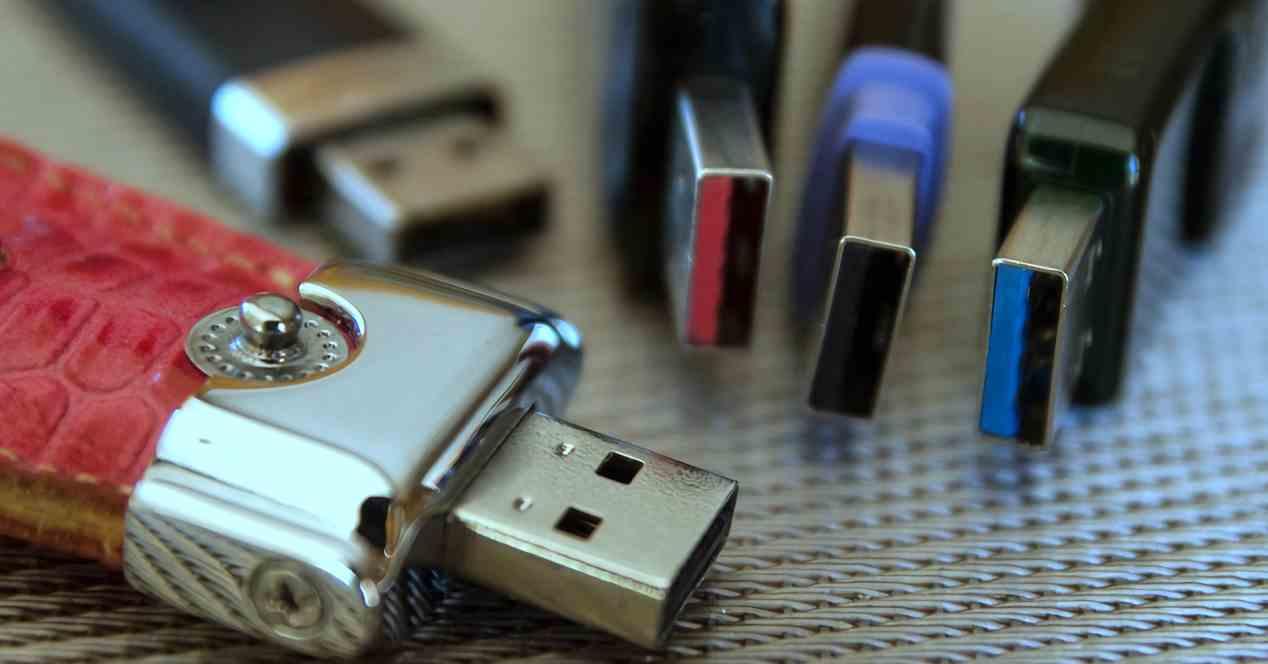When you look at the USB ports of different devices and peripherals, you will surely have noticed that there are a lot of them with different colors. Something that at first glance may seem for aesthetic reasons. However, this is not the case and it is important to know the USB port color code. To know what is the usefulness of each of them.
The universal serial bus has earned its name by hand all this time. The interface with more than twenty years of delay surpassed VGA in longevity and left a large number of interfaces for devices and peripherals. However, it was from version 3.0 of the standard that color coding began to appear.
This was originally done to differentiate the so-called new high-speed or third-generation USB from the rest. However, over time new colors have appeared which makes the task more confusing for the end user. However, these do not present any complications and can help us know where to connect our devices in the most appropriate way possible.
Color coding of USB ports and cables
The USB port is a dual function port. On the one hand, it is used to make a peripheral communicate with our computer and on the other hand it is used to feed it. Besides other additional functions that have been added over time. Regarding the USB color code, we refer to the standard ports, that is, those of type A., although we must also add those of Type B, less used, but they also share.
- the White color this helps us identify if the interface is USB 1.0 or 2.0. In fact, to date, there is not a single device in existence that is 1.0. Thus, a port of this type indicates that its transfer speed is 480 Mbits per second. That is 60 MB/s. It is therefore ideal for keyboards, mice, speakers and headphones.
- If the port is black colorthen it means it is type 2.0. Today, this color is no longer used.
- the dark blue color indicates the port is USB 3.0 and can therefore transmit up to 5 Gbps, that is, more than ten times more than 2.0. It is therefore ideal for external hard drives.
- On the other hand, if the color is a lighter blue, then we are talking about USB 3.1 and 10Gbps speeds.
- If the connector is redthen he tells us that it is USB 3.2 and therefore reaches 20 Gbps .
Charging-related USB connectors
The next type is fast-charging USB ports and cables. These are ports that can transmit more power than normal by increasing their amperage, but maintaining their voltage. However, due to the use of different color coding in these USB drives, we find that they cannot be differentiated which generation they belong to. This greatly complicates its identification. An additional identifier is therefore necessary. For example, the illustration below, which tells us that it is a 10 Gbps SuperSpeed, ie. A USB 3.1. In addition, fast charging ports are usually identified by a charging icon, in the case of Type-C or use the color orange.
Another variant are USB yellowwhich indicate that these ports are still active. Even when the system is idle, they continue to operate and transmit energy. So if you have a laptop with this port, keep in mind that you can use its battery as a PowerBank. So you can recharge the mobile in case of emergency. We hope you found this quick guide to color USB ports helpful.










